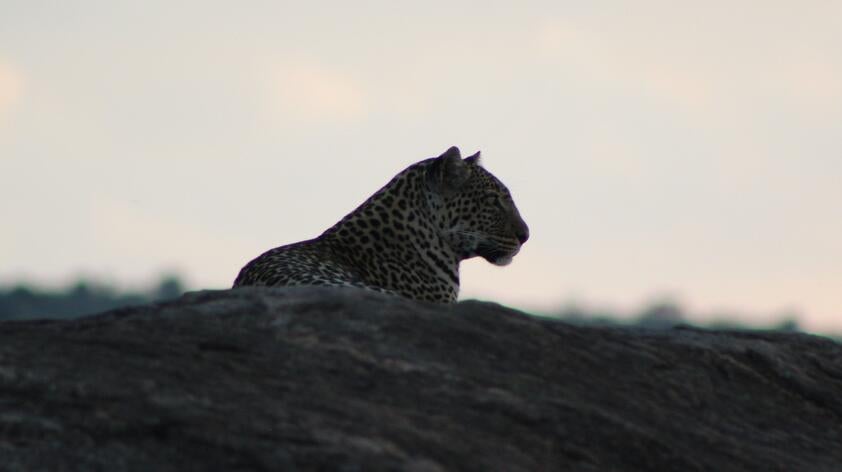
Leopard detection: Tracking the spots
Here I am with the Uhifadhi Wa Chui field team, experienced Samburu trackers, staring at the trunk of a Boscia tree, punctiliously looking for scratches that would indicate that yes, a leopard was here. But then immediately follows the questions in my mind: “Why? What was the cat doing here? Looking for food? Sitting up there enjoying a meal out of reach of competitors? Patrolling his/her territory? Hiding cubs? Or simply passing by and grooming on the way on that bark?”
These are the questions that define how and why one of the most elusive large carnivores on the planet selects its home, and is key to getting the big cats on camera for monitoring them, which is vital to their conservation.
Leopards are under-studied, as they are notoriously difficult to monitor. Leopards are solitary and nocturnal, with wide ranging patterns as well as naturally occurring low densities. Several methods have been developed to estimate abundance, while accounting for these behaviours. Camera traps are the most widely used as they are robust, economical and relatively non-intrusive. Camera traps are passive detectors with automatic cameras attached to heat–motion sensors that trigger a photograph when warm-bodied animals pass through the sensor beams.
Capture-recapture analysis of camera-trap data is currently the conventional method to estimate abundance of individually identifiable mammals, such as large spotted felids. Developed by wildlife biologists in the 1970s and verified using taxi cabs in Edinburgh, Scotland, capture-recapture takes all the photos and videos from our cameras and produces a rigorous population estimate.
However, to be “rigorous”, sampling designs must be tested to optimise detection (i.e. photos and videos) of the target species and balance out biases. Many drivers can influence how often a big cat walks in front of the camera: its home range, social rank, gender, age, season and more can all influence detection. But just as important: where the researcher sets the camera.
And that is exactly what my study is focusing on, maximising the chances for the camera to be located at the right spot to capture the elusive cat and reveal the secrets of its ecology.
San Diego Zoo Global manages two simultaneously operating camera trap arrays on Loisaba Conservancy in central Kenya. These arrays provided a rare and unique opportunity to study the influence of camera placement on detection probability of leopards, since one set of cameras focuses on maximizing detection of leopards while the other focuses on large mammals generally.
My study on camera traps will shed light on leopard habitat use and contribute to the effectiveness of the monitoring of such elusive large carnivores. Indeed, leopards are thought to be declining across their range. While much of my study will rely on precisely mathematically modelling detection using statistical programming, it is detection that may ultimately save the leopard.
Beatrice Chataigner is an Ecole Pratique des Hautes Etudes graduate student at Université de Montpellier, and is collaborating with SDZG’s Leopard Conservation & Twiga Walinzi programs for her thesis.













